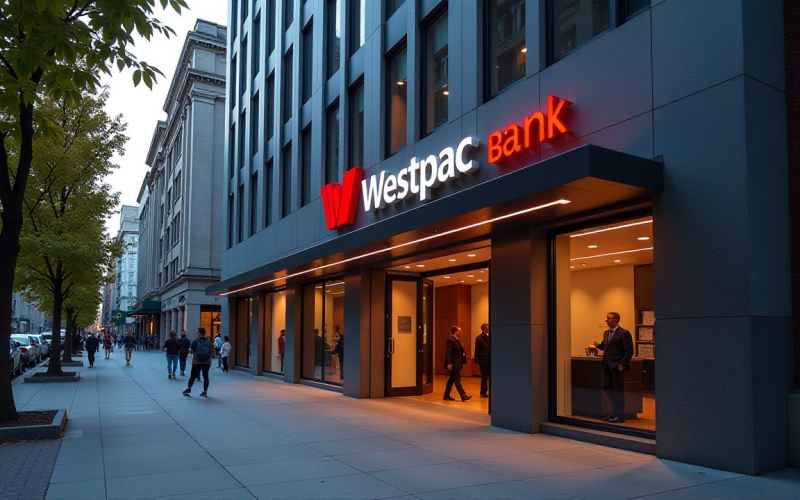The Westpac share price retreated by over 2% on Monday after the Australian bank published results that missed analysts’ estimates. It retreated to a low of A$32.17, its lowest level since April 24, and 4.805 below its highest level this month. This article explores whether it is safe to buy the dip.
Westpac stock drops after earnings
The Westpac share price fell by 2% on Monday after releasing its financial results for the first six months of the year to March 31st.
These numbers showed that its net profit dropped by 1% in this period to $3.47 billion. The closely-watched net interest income rose by 2% to $9.5 billion as Australian interest rates remained elevated.
The company, which is one of the top four banks in Australia, blamed the earnings miss to the rising competition, which affected its margins. Indeed, top Australian banks have been on a price war in the past few months as they sought to offer more loans.
Westpac also blamed the global issues that it warned would likely lead to higher funding costs in the coming months. Precisely, the bank warned about the ongoing trade war between the United States and other countries, including Australia and New Zealand.
Nonetheless, the bank expects that the two countries will largely be insulated from this war because of the type of goods they sell to the US. The US will continue importing these goods, which include gold and meat products even with the US tariffs. The management said:
“Westpac’s strong financial position is underpinned by surplus capital, stable funding, strong liquidity, and credit positioning. This provides flexibility to withstand uncertainty and support customers.”
WBC net income margin slipped
Westpac’s net income margin was 1.88%, as the core NIM fell by 3 basis points and treasury and markets income falling by 1 basis point.
Another notable figure in its income statement was the CET1 capital ratio, which declined by 25 basis points to 12.2%. This ratio dropped because of its dividend payout, higher risk-weighted assets, capital deduction, and share buybacks of $581 million. These declines were offset by its net profit, which added 74 basis points.
The results showed that its credit impairment provisions of $5 billion, $1.7 billion higher than the expected losses.
Westpac repurchased shares worth $600 million in the period and then paid a dividend of $2.6 billion or 76 cents a share. It has a dividend yield of about 4.5%, higher than most Australian companies. This means that a $10,000 investment in Westpac will generate about $450 in dividends a year.
Westpac share price analysis
The daily chart shows that the WPC stock price bottomed at $28.45 on April 7 this year. It then bounced back, and moved to the current $32.50.
The stock remained above the 50-day Exponential Moving Average (EMA), a sign that bulls are still in control. It has retested the highest swing in March this year.
The Westpac share price has moved between the strong pivot reverse and the top of the trading range of the Murrey Math Lines.
Therefore, there is a likelihood that the Westpac stock price will continue rising as bulls target the ultimate resistance point at $34.38. This rebound will be confirmed if the stock rises above this month’s high of $33.60.
A surge above the weak, stop & resistance level at $33.60 will signal more gains, potentially to the year-to-date high of $35.27, up by 8.47% above the current level. A drop below the major S&R point at $31.25 will invalidate the bullish outlook.
The post Westpac share price slipped after earnings: time to buy the dip? appeared first on Invezz


